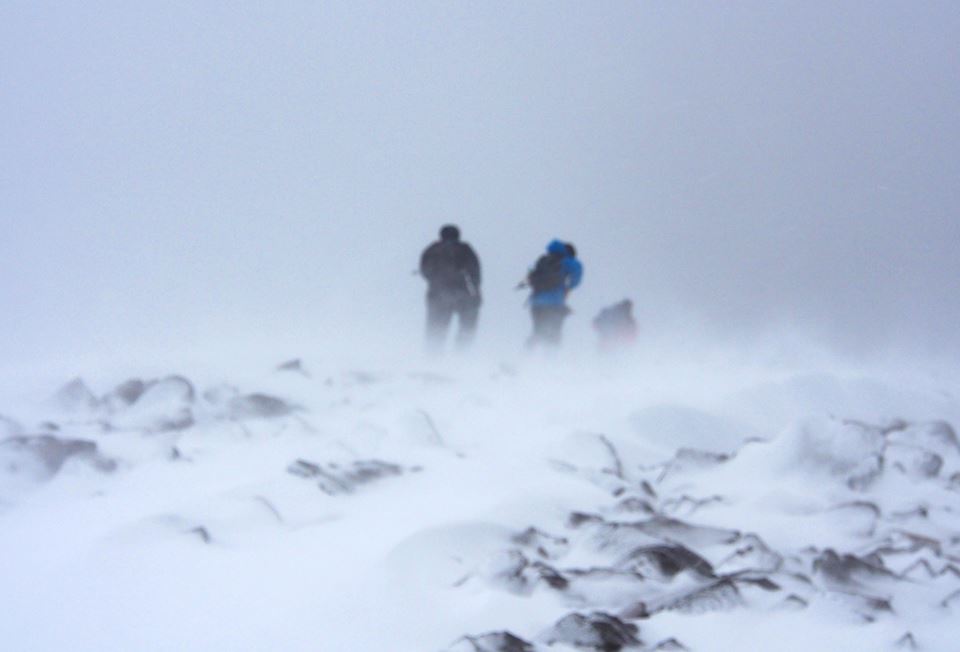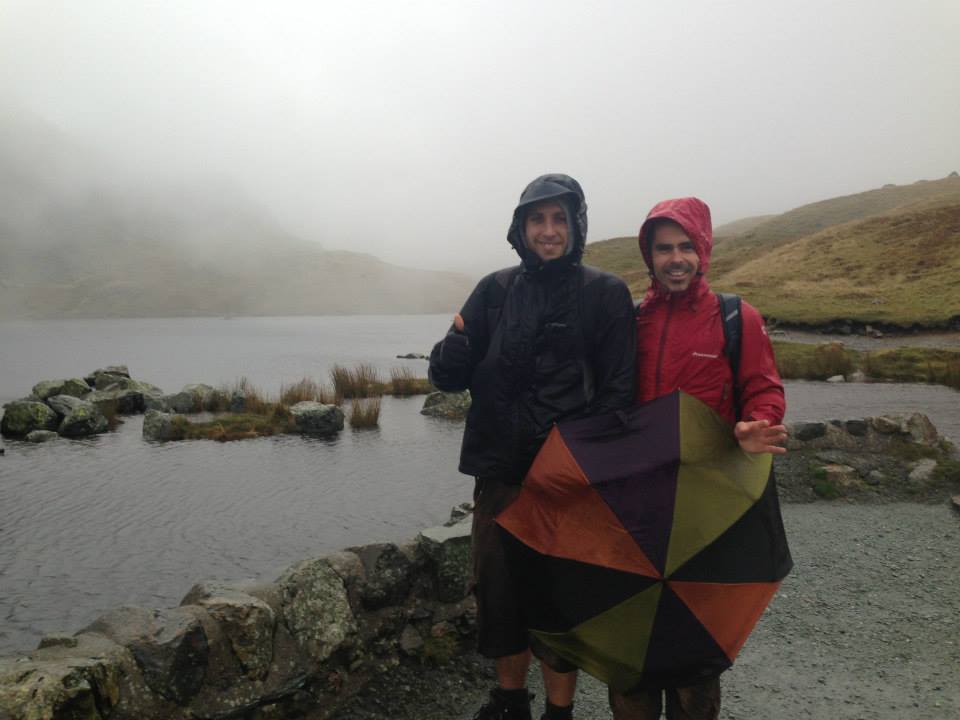Bad weather doesn’t have to mean a bad time. Here are five tips for making the most of awful conditions.
“Winds south to southwesterly in the range 50 to 80mph, gusts up to 100mph. Walking difficult from lower slopes up. Any mobility tortuous on higher areas. Significant wind chill. Heavy (at times torrential) rain for most of the day.”
Ah, the mountain weather forecast, that indispensable but often depressing feature of the British hill walker’s life. On rare and beautiful occasions they deliver good news, but a lot of them seem to read like apocalyptic prophecies.
But don’t despair. With a bit of adaptation and positive thinking - okay, a lot of positive thinking - you can make the most of even the worst weather. Here are five tips on how.
1. Give your gear an MOT
In the words of famous hill walking grump Alfred Wainwright: "There's no such thing as bad weather, only unsuitable clothing."
Okay, it’s not really true, but he has a point anyway. Appropriate kit and clothing can make more of a difference than many people realise to your ability to withstand the elements at their fiercest. Hostile weather acts like bright light on a counterfeit note, exposing all its weaknesses and deficiencies. There might not seem much difference between a budget waterproof and a pricier one in summery drizzle, but when you’re staggering around the Carneddau in a blizzard or picking your way across Crinkle Crags in storm force winds, you’ll be thankful for the extra quality. In these straitened times it’s not easy to think about shelling out hundreds on expensive insulated jackets and waterproofs, but it may save you money in the long run and has the potential to make you much more comfortable (don’t forget BMC membership can help with the cost of gear by giving you up to a 15% discount in outdoor stores.) But as well as being prepared to spend money, you must also spend wisely - do your research before committing to a big purchase. There are plenty of magazines, blogs and websites to help you with this - ask fellow outdoorgoers to find trustworthy, tried-and-tested sources of information.
Take a look at your existing gear setup to see if it can be improved or added to. Remember wet is the enemy of warmth; the simple addition of a pair of decent waterproof trousers might make a world of difference to your comfort on the hill. Take care of your extremities; in winter, for example, it’s often advisable to have a two or even three-layer system for gloves – a pair of windproof fleece gloves, then chunkier waterproof mountaineering gloves to go over the top, and finally some big toasty mitts for when your hands get really frozen. And an insulated jacket made from down or a synthetic insulating material for when your body cools down at rest and food stops is a cold-weather must have.
Properly protecting yourself from bad weather can be a bit of an art, and the right gear setup varies from person to person; you may need to try a variety of different systems and equipment types to work out which combination is right for you.

Imagine how much fun is being had here
2. Go low, but think big
Unless you’re partial to masochism, we all know that when the high tops are threatened with gale force winds and blizzards there really isn’t that much to be gained from venturing on to them.
The obvious thing to do is to seek out more clement conditions at lower altitudes, but if this seems a disappointment, remember that lower doesn’t necessarily mean less spectacular. Some small hills have big personalities, and afford spectacular views; miniature mountains like Loughrigg Fell or Castle Crag in the Lake District, Chrome Hill and Parkhouse Hill in the Peak District, Conic Hill by Loch Lomond, Roseberry Topping in the North York Moors or even the slightly bigger Yr Aran in Snowdonia offer ample compensation when the true giants are off-limits. There is even a school of thought that smaller hills offer better views, as you get to look up at the big mountains instead of gazing down on smaller ones. Although someone might have just made that up to make themselves feel better.
3. Don’t go it alone
Motivation is a key factor when it comes to getting out on the hills in rubbish weather. Even the most awful conditions invariably offer something worth getting out of bed for, but it can be hard to remember this when trampolines are tumbling past outside and just opening the front door makes you feel like Captain Oates. To lessen the risk of abandoning it all and retreating to bed, make sure you arrange to go with others; the shame of the ‘fairweather walker’ label will make you less likely to wimp out, and the camaraderie of friends will help keep your spirits high as you plough up that hail-lashed slope.

Lovely stuff
4. Take heart
Wind can be lashing your soaking body, rain can be pouring from the heavens, and you can want nothing more than to be inside. But it’s amazing how, reflecting on the experience next to the licking flames of a cosy pub fire, you can convince yourself it was actually great fun. Whatever the weather, the exercise-unleashed endorphins, the experience of being in nature and the sense of accomplishment at grappling with the elements will make it feel worth it. If you’re struggling for motivation, mentally think yourself into this situation, and imagine how good that steak pie and chips will taste next to the fire once you’d dried off.
5. Be careful
It goes without saying that bad weather makes the mountains more dangerous places to be. Always look at the forecast in advance and plan a route accordingly: if winds are high, steer clear of exposed ridges and high crags; if rain will be heavy, avoid the possibility of crossing swollen streams; if the hills are plastered with snow, ensure you have the right skills and equipment for winter weather and are avalanche aware. For more information see the links below.
Enjoy the grimness!
WINTER WALKING: Essential links and videos
Bad weather is one thing, but walking when there is snow and ice lying on the hills requires specialist skills and equipment. Check out these links for more information:
-
Essential winter know-how: Heading for the hills this winter? Whether you're a seasoned winter warrior or just taking your first icy steps, we've got a mountain of essential skills and equipment advice for you right here on the BMC website.
-
Ten mistakes winter walkers make: and how to avoid them: Only ever hill walked in summer before? Welcome to big school. Here’s your heads-up to some of the most common winter walking mistakes and how to steer clear of them.
-
Hill skills: winter mountaineering: Travelling through the British hills when they are plastered with snow is incredibly rewarding, and can offer some of the most memorable days out of the year. But the combination of short days and bitterly cold arctic weather systems can present challenges to the unwary mountaineer.
LIFE-SAVING LINKS:
DOWNLOAD:
Winter skills films on BMC TV:
Watch, learn, and above all, have fun!
This series is the first in our range of winter skills videos. If you want to skip ahead just follow the links below.
Winter skills series one
WATCH: Choosing winter boots and crampons on BMC TV
WATCH: Kit: what's different in winter, on BMC TV
WATCH: How to choose an ice axe, on BMC TV
WATCH: How to carry an ice axe, on BMC TV
WATCH: Conditions and weather, on BMC TV
WATCH: Route choice: what's different in winter, on BMC TV
WATCH: Kicking steps and an introduction to self-arrest, on BMC TV
WATCH: Winter navigation tips, on BMC TV
WATCH: Travelling in the winter hills, on BMC TV
 DON'T MISS - BMC TV skills channel:
DON'T MISS - BMC TV skills channel:
Join online today by Direct Debit and save 25% on your first year's membership.
WATCH: What does the BMC do for hill walkers?
GET THE KNOWLEDGE: BMC resources for hill walkers
« Back